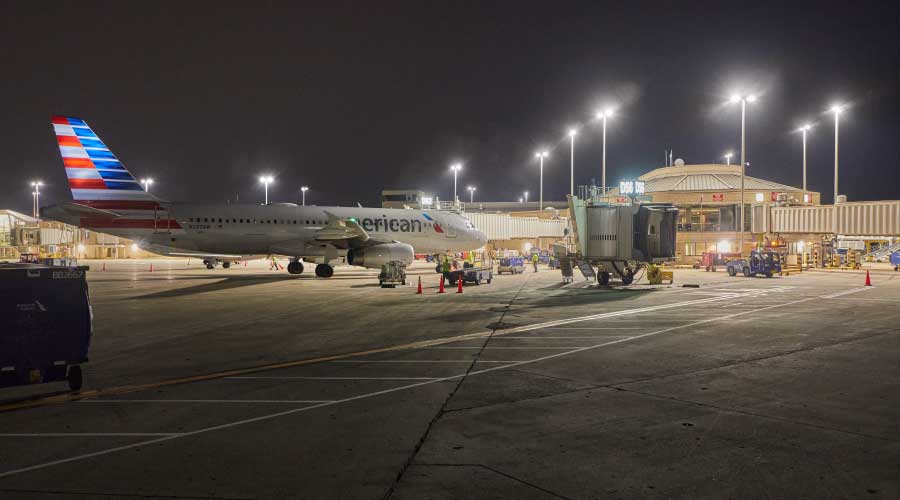Codes, Standards Influence Lighting Retrofits
Complicating matters for managers are codes and standards, as well as federal tax incentives, that influence the product decisions they make for lighting retrofits.
"State and federal legislation for lighting is becoming more and more restrictive, making controls increasingly important," Beale says, noting that the ASHRAE/IESNA/ANSI 90.1 Standard has made lighting controls mandatory since 1999. "Some states now require lighting controls for exterior lighting to dim outdoor lighting to 50 percent at close of business."
One central goal of the changes to standards and codes is to curtail energy use and minimize the impact of facilities on the environment.
"Energy standards and codes are changing rapidly to keep pace with federal policy objectives fostering greater energy efficiency," Park says. "For instance, as part of the (American Recovery and Reinvestment Act of 2009), each state was required to adopt an energy standard or code that was at least as stringent as ASHRAE Standard 90.1-2007 or IECC 2009, or to sign a letter acknowledging the state would adopt an energy code in order to obtain its portion of the stimulus money."
Managers also need to understand the tax incentives available to their organizations under the Energy Policy Act of 2005 (EPAct 2005). The Emergency Economic Stabilization Act of 2008, approved in October 2008, extends the EPAct 2005 benefits through Dec. 31, 2013.
EPAct provides an immediate tax deduction of up to $1.80 per square foot for building investments that achieve specified energy cost reductions beyond the standards set in ASHRAE 90.1-2001.
A one-time deduction of $1.80 per square foot is the top tax deduction, but deductions of up to 60 cents per square foot are available for three types of building systems: lighting — including lighting controls — HVAC, and the building envelope. To obtain a tax deduction of 30 cents per square foot for lighting, the project must reduce the wattage by 25 percent from ASHRAE 90.1-2001 levels.
Finally, utilities are offering rebates managers must factor into their projects.
"Federal, state, community, and electrical utility lighting incentive programs have been built around high efficiency T8 and T5 fluorescent systems, pulse-start metal-halide systems, and controls such as occupancy sensors and dimming," Anderson says. "Today's T8 and T5 lamps also offer an added advantage: they use less mercury than the T12 lamps they replace."
Not surprisingly, the federal government is continuing its efforts to improve the energy efficiency of facilities and the products that go into them.
"The DOE is conducting another fluorescent-ballast rulemaking, and in many cases, the standard levels they are going to consider will eliminate even T12 electronic ballasts when these standards go into effect in 2014," Anderson says. "Everyone needs to get the message that T12 systems are inefficient compared to T8 and T5 fluorescent systems, and retrofits, whether they are ballast-and-lamp retrofits of existing T12 fixtures or a complete replacement of fixtures, should use T8 or T5 systems.
"In the case of metal halide, everyone should be aware that the DOE recently started a rulemaking to further regulate the efficiency of ballasts used in new fixtures and is about to begin a rulemaking on (high-intensity discharge, or HID) lamps. In the announcement of the HID lamp rulemaking, the DOE proposed elimination of the older metal-halide probe-start technology lamps. When considering metal halide, think pulse start for greater energy efficiency."
For managers still undecided about the potential benefits of lighting retrofits, Freshman offers this bottom-line insight: "Not conducting a retrofit costs you more and more each year."
Spotlight: enlighten America
The National Electrical Manufacturers Association (NEMA) has teamed with the lighting members of the electrical industry to launch a Web-based initiative aimed at saving energy and reducing energy costs in the 5 million existing commercial, industrial, and institutional buildings in the United States. The campaign, called enlighten America, targets building owners, managers, operators, and anyone interested in upgrading lighting products in non-renovated buildings.
The enlighten American Web site features:
- energy-saving solutions through energy-efficient lighting products
- case studies
- information on tax incentives
- recycling strategies for fluorescent lamps
- information on energy-efficient lighting products, high-intensity-discharge and compact-fluorescent lamps, luminaires, lighting controls, NEMA Premium ballasts, LEDs, and exit signs.
www.nemasavesenergy.org
|
Related Topics:














